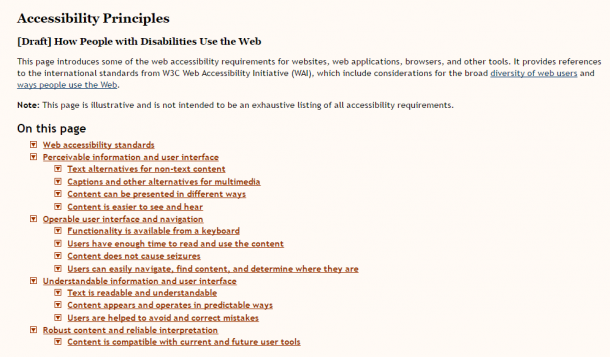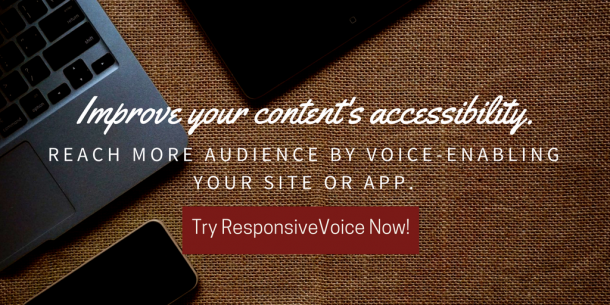It holds true that people with disabilities find challenges in using the Web and computers in general. Although there are specialized devices and applications available for people with certain disabilities, making websites and the world wide web more accessible present significant advantages that could cover multiple devices, including mobile devices.
In 1997, the Web Accessibility Initiative (WAI) was launched by the World Wide Web Consortium (W3C). WAI aims to develop strategies, guidelines, and resources to help make the Web accessible to people with disabilities.
Taken from Wikipedia, the needs that Web accessibility aims to address include:
- Visual: Visual impairments including blindness, various common types of low vision and poor eyesight, various types of color blindness;
- Motor/mobility: e.g. difficulty or inability to use the hands, including tremors, muscle slowness, loss of fine muscle control, etc., due to conditions such as Parkinson’s Disease, muscular dystrophy, cerebral palsy, stroke;
- Auditory: Deafness or hearing impairments, including individuals who are hard of hearing;
- Seizures: Photo epileptic seizures caused by visual strobe or flashing effects.
- Cognitive/Intellectual: Developmental disabilities, learning disabilities (dyslexia, dyscalculia, etc.), and cognitive disabilities of various origins, affecting memory, attention, developmental “maturity,” problem-solving and logic skills, etc.
Additionally, here’s a snapshot of W3C’s Web Accessibility Principles:

In a perfect world, all web projects will incorporate web accessibility principles and adhere to its guidelines. Unfortunately, in the real world, web accessibility is often overlooked.
According to Shaun Cronin, a freelance web designer from England:
The World Wide Web is especially significant for those with disabilities as the vast amount of digital information stored can be manipulated to meet differing requirements. Unfortunately, the power and adaptability of the Web is not always fully utilised and those with disabilities can find it difficult to navigate websites and have a negative experience with the Web in general.
Why do you need to consider web accessibility?
- Your content will reach more audience.
- Web accessibility legislation has been passed in Australia, Brazil, European Union, Ireland, Israel, Norway, Italy, and the United Kingdom. More countries will follow and guidelines are expected to be legally implemented in the US in 2018. To summarize: If you fail to make your website or app compliant with web accessibility, legal action could be brought against you.
- Web accessibility promotes social equality and is anti-discriminatory. Case in point: lawsuits were already filed against websites not accessible to the blind in the US. Although any formal legislation has yet to be adapted in the US, these cases were filed on the basis of non-compliance citing the Americans with Disabilities Act. JC Penny, Home Depot, Ace Hardware, Aeropostale, Bed Bath & Beyond and Estee Lauder are just some companies sued in 2015 by blind plaintiffs. The US Department of Justice has sued and arranged settlements with big brands for not meeting the website needs of their disabled customers.
- The aging population is expected to grow. This means that we are facing a growing number of internet users who will develop either a permanent or temporary condition which the Web Accessibility Initiative aims to solve.
It is very important for web designers, website owners, and developers to be informed about web accessibility and take this into consideration when launching a new website or application. It is also a great time to be thinking about how accessible your website currently is. The majority of the steps to promote web accessibility is not only beneficial for people with disabilities, but can also benefit all website visitors.
Want to improve your website’s accessibility? Reach more audience by voice-enabling your site. Try ReponsiveVoice’s Text-to-speech!

Read more:
“6 Tips for Improving Website Accessibility” by Shaun Corin
Resources for the Blind and Vision Impaired

